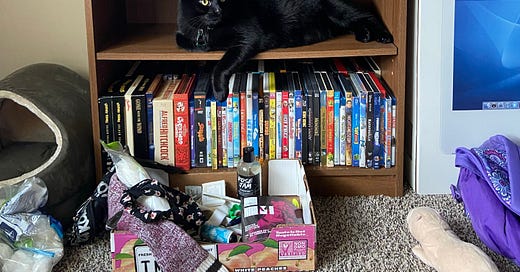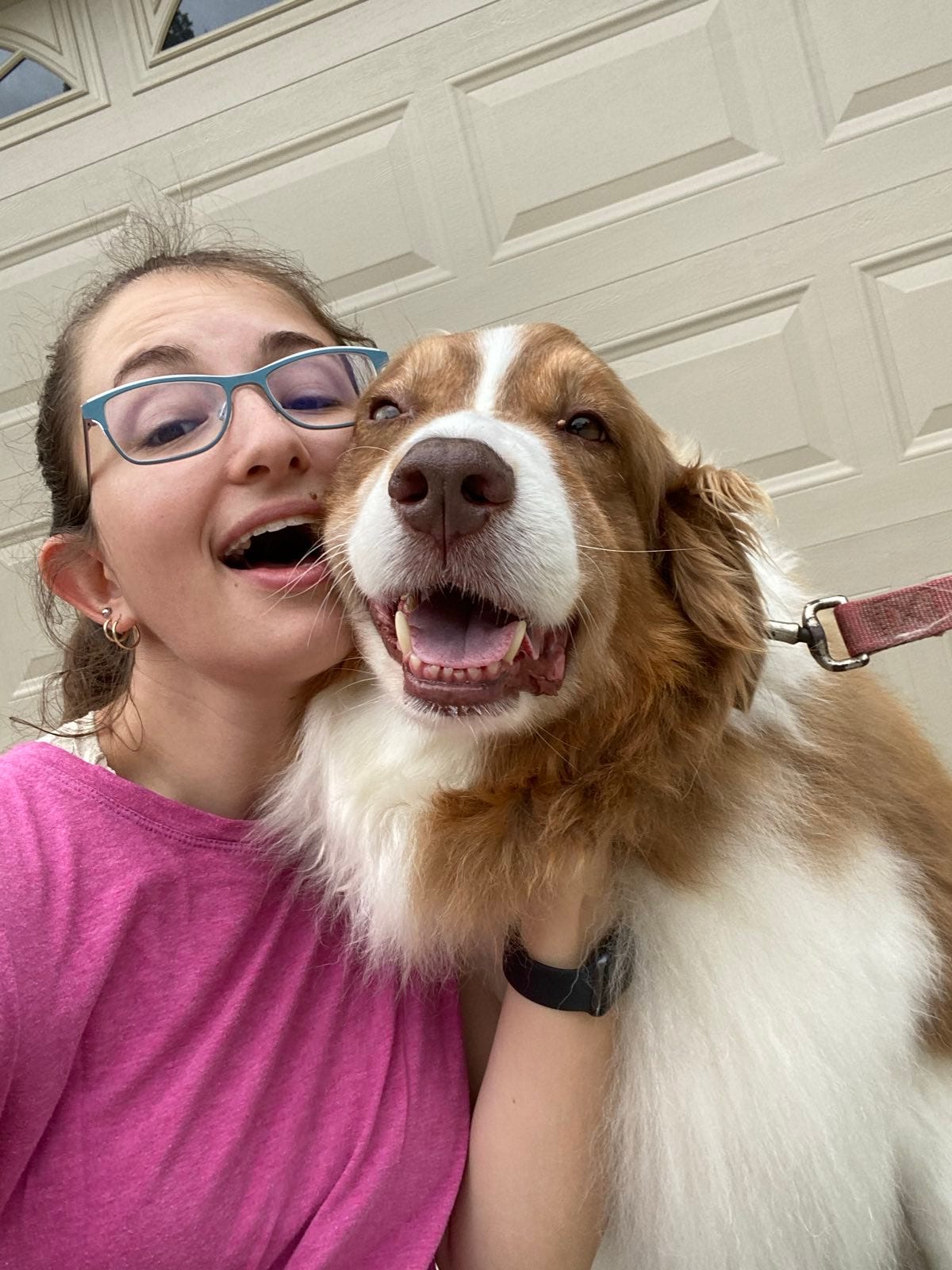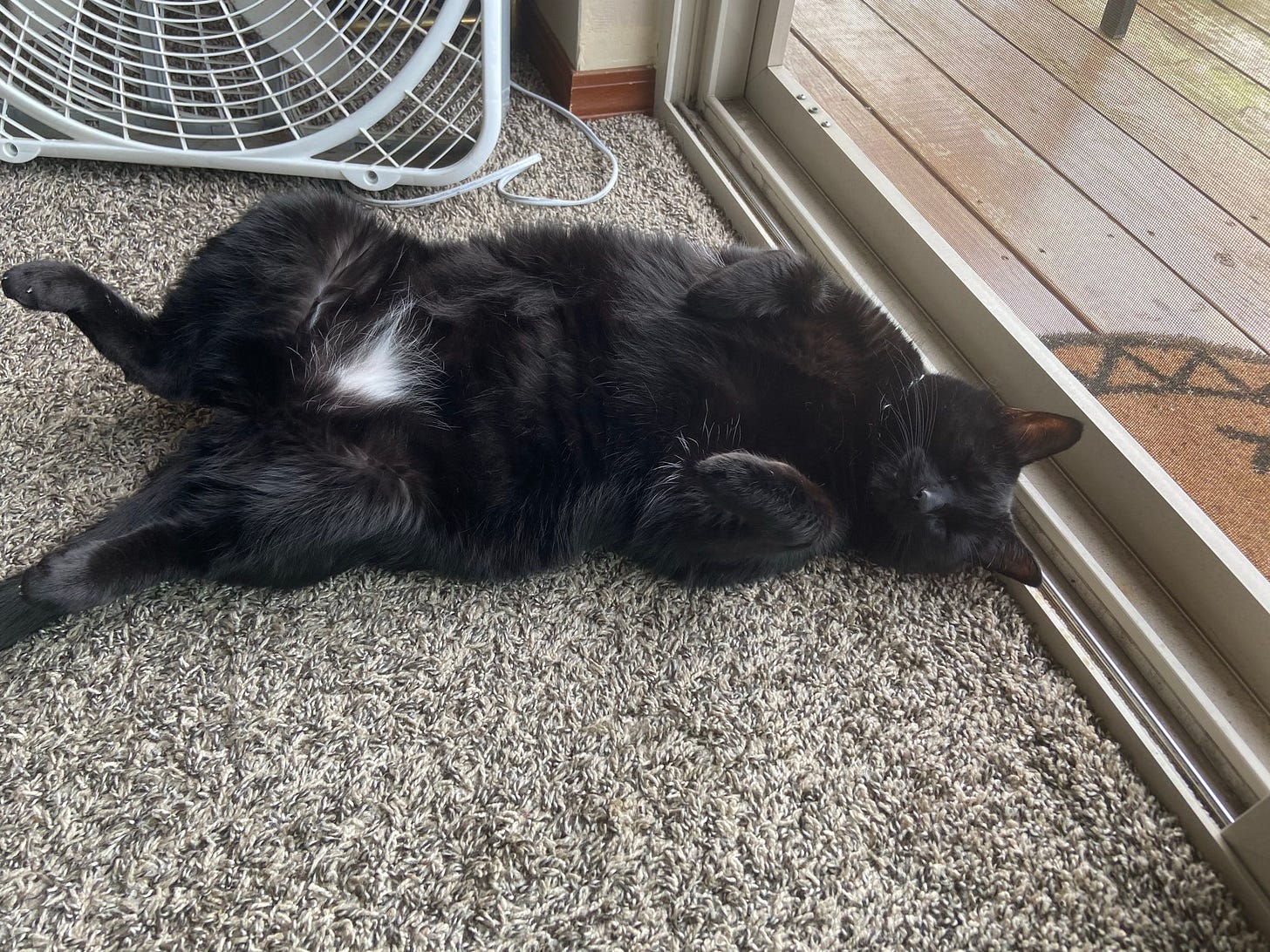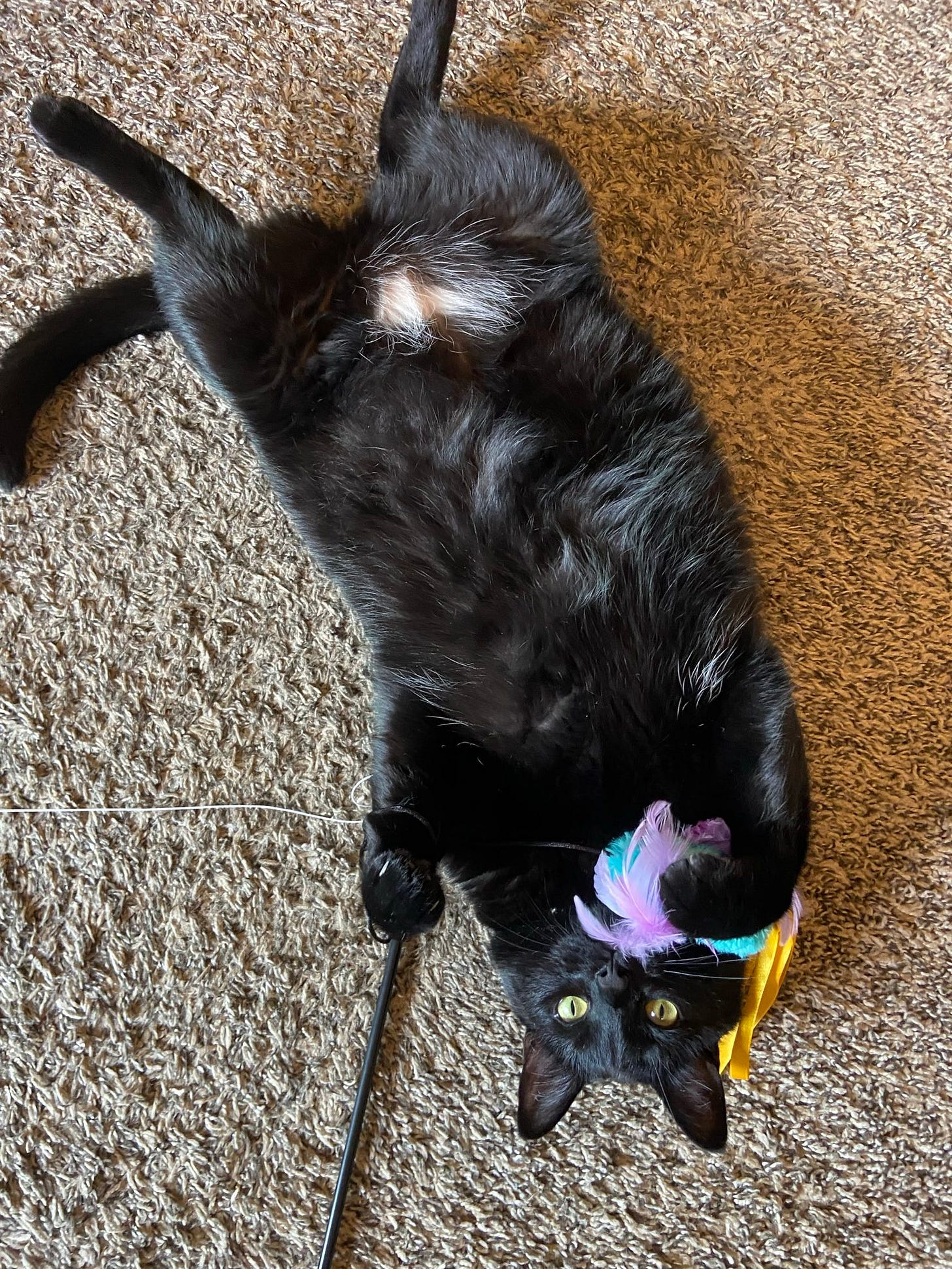What I've Learned About Cats
My new furry friend gave me the crash course in feline behavior that I didn't know I needed
I’ve always been a dog person. Growing up, most people I knew had dogs. And thankfully, except from one unfortunate incident where a neighbor’s chocolate lab toppled me as a small child, my experiences with pooches were largely positive.
I was that kid who would always ask if I could pet your dog in public. I knew every dog breed and could tell you my favorites: Huskies, Samoyeds, and Saint Bernards.
At one point, I was obsessed with the Iditarod and dreamed of going to Alaska and having my own sled dog team. In 4th or 5th grade, my grandma took me to Build-a-Bear Workshop where I “adopted” my own husky, along with several husky pups that wore cute little bandanas and attached to the roof of the big husky’s mouth with a magnet. You get the picture.
My best friends in elementary school all got dogs before me, which was a sore point for a while. I wanted my own dog, too (even though we all know better that I, at probably 8 or 9 years old, wouldn’t have been the primary person taking care of it). My mom and dad said no so many times, but they eventually caved and adopted an Australian Shepherd pup when I was in middle school.
His name was Buddy, and he fulfilled all my childhood doggy dreams. I really don’t think we could’ve raised a sweeter pup (although he had plenty of mischievous moments). Buddy died a few years ago after being sick for a while. I think he was around 13 years old, which was a nice, long life for a dog.
Anyway, this story isn’t about dogs — it’s about cats. Specifically, about how little I knew about cats until recently. I blame that lack of knowledge (partially) on my childhood obsession with dogs, which left me completely ignorant to the fact that cats are very different creatures.
Five weeks ago, Ryan and I adopted Juno, a green-eyed black cat who used to live with my mom. Juno is four years old now, but me and him go way back to when he was a kitten. (You can read about that here).
When Ryan and I were planning for Juno to come live with us, I honestly couldn’t imagine what my life would look like with a cat. Yes, I’ve spent time around cats, but I never had one growing up — and it turns out that does makes a huge difference.
I know a lot about raising dogs. How to train them, discipline them, and interpret their behavior when they start acting up. Having a dog is like having a tail — they’re always right behind you, ready to give (and receive) companionship. They might have their own doggy way of expressing their feelings, but in my opinion their body language and barks tend to be quite easy to read.
Cats, on the other hand, are not the same as dogs. It’s silly to even write that out in a sentence. But I was naive when we adopted Juno, thinking that his existence in my home would be like having a dog, since that’s the only kind of pet I know how to care for.
Sure, there are a lot of things that dogs and cats have in common. There’s the obvious stuff: they rely on us for food and water, they know how to ask for things (like scratching at the door when they want to go outside), and they show varying degrees of affection for their owners. Then there are other things that cats do that dogs don’t, and vice versa.
One of the first days after we got Juno, I was alarmed by how little he came to visit me when I was working in my home office. Every time I went into the kitchen to get a snack, I’d see him curled up on one of the kitchen chairs, completely conked out. I think he stayed that way all afternoon before I started to worry.
I Googled: How long do cats sleep? and How do I know if my cat is sleeping too much? because I genuinely thought something might be wrong with him. I found out that the average cat sleeps for 12 to 16 hours per day, which checks out with Juno’s schedule. Comparatively, dogs need about 12 hours of sleep, but will also sleep in larger chunks of time, unlike cats, who doze on and off all day and night.
So seeing Juno nap for several hours during broad daylight wasn’t actually weird. But it was weird to me, since I’m used to dogs that tend to just laze around but not sleep as much during the day. I asked Ryan if he thought Juno was napping excessively, since Ryan grew up with cats. He laughed at me a little (which is fair) and reassured me that the cat was just doing a normal cat thing.
Another thing I’ve been getting used to is that Juno doesn’t need nearly as much activity as my dog Buddy did. Buddy seemed to have boundless energy, in part due to the fact that Australian Shepherds are a herding breed and are literally designed to run around all day. Throwing his toy around for 15 minutes and then letting him outside to run around for another 20 and then playing a mind teaser game with him right after did little to quell his boredom. He was constantly asking for interaction in the form of barks and mischief (like stealing things he wasn’t supposed to have).
Juno, on the other hand, will sometimes get a little pesty when he hasn’t done anything in a while. Then, we’ll play with one of his wand toys, treat boxes, or the laser pointer for about five minutes. And after that, he’s pooped! I turn around and he’s blinking at me heavy and ready to nap again.
Honestly, I love that part about having a cat. Sometimes he’s a bit of a pest, but it’s pretty easy to get him to stop bothering me.
I’ve also learned that Juno isn’t always asking for something specific when he meows at me. Since he moved in, our kitty pal has gotten a LOT more chatty than he was when he first arrived. When Juno started talking more, I got a little worried because I thought he might be asking for something but I just didn’t understand what. Now I’ve come to accept that sometimes he isn’t asking for anything specific. He just likes to yap.
Juno has proven to be a pretty smart cat as well. He’s learned, for example, that our morning alarms mean we’re waking up for the day. Once he hears them, Juno will either come into our bedroom to greet us or get up from where he was laying on the bed and come over for pets. It’s super cute.
He also loves solving puzzles, and will beg us for his treat puzzle box several times a day. It’s literally the same puzzle every time, but he somehow never gets bored.
Juno is intelligent, but not too smart for his own good. We like to turn the TV on for him sometimes when he’s being a pest, and he loves watching videos of birds and forest critters running around on camera. But he hasn’t quite figured out that these animals aren’t real, and will sometimes try to peek behind the TV or swat at the screen. I think that’s partially the reason why the TV is entertaining; if he was smart enough to know it was all fake, he might not pay attention.
Juno himself is pretty entertaining to have around. I like to watch him get curious about all the nooks and crannies in our apartment, and to see his face become immediately focused when he sees a neighbor walking around in apartment grounds. He can be quite silly, especially after he has catnip. And I think it’s sweet how he comes and finds me during the day because he wants me to pet him or give him a treat.
Most cats I grew up around were aloof and independent, so I thought all cats were just like that. Dogs were the friendly, curious, and playful ones, but cats kept to themselves, didn’t care much for human contact, and could be spiteful at times.
Juno proves my young self wrong. Sure, he has times when he wants to be alone, but for the most part I’d say he’s quite affectionate. He loves people, and greets everyone that comes over. He loves to play, and runs into the room when he hears us grab the laser pointer. Every time we get home after being out of the house for a while, he comes right up to greet us. Even as I was writing this essay, he came over to my desk and asked me to pet him after a nap.
I believe that a good pet is a good companion. And for the longest time, I mistakenly thought that only dogs could be good companions. But Juno doesn’t just live in my home and ignore me like I thought all cats do. Instead, it feels like he’s part of the family now.
I see by the way he acts that he wants to be loved, included, and appreciated. In return, he’s lends me a listening ear and a soft coat to pet, which is all I could ask for.
If you enjoyed this post, consider dropping a donation in my tip jar on Ko-fi!
This newsletter will always be free to read and share, but I rely on the generous donations of readers to build financial security and keep this project going long-term.
Huge shoutout to my 2024 supporters:
Dennis T.
KRW
Grandma Gin Gin
Tara Y.
Murphy Kaye
Maddie B.
Mom
Emma H.
Molly G.
❤️❤️❤️
New writing class alert! I’m teaching a workshop at the end of August. It’s called Grief and Memoir: Writing to Heal.
If you’ve been a reader here for a while, you’ll know that I frequently write about my dad’s passing in 2018 and how that’s left a lasting mark on me as a person. Writing is a way for me to process that loss year after year, because grief never really goes away.
I designed a class where we’ll talk all about grief writing — why it matters, what to do when it feels difficult, and how we can use it as a tool for healing. If you’ve been impacted by a significant loss in your life, be that of a parent, pet, friend, or even a place or state of being, this class is for you.
There will be two sessions: an in-person class at WordHaven Bookhouse in Sheboygan, WI, and a virtual class that anyone can attend. You can sign up for both classes on the WordHaven website. Each one is $10 per person.
In-person class at WordHaven: Saturday, Aug. 24 (sign up here)
Virtual class: Saturday, Aug. 31 at 1pm Central Time (sign up here)
Hope to see you there!






